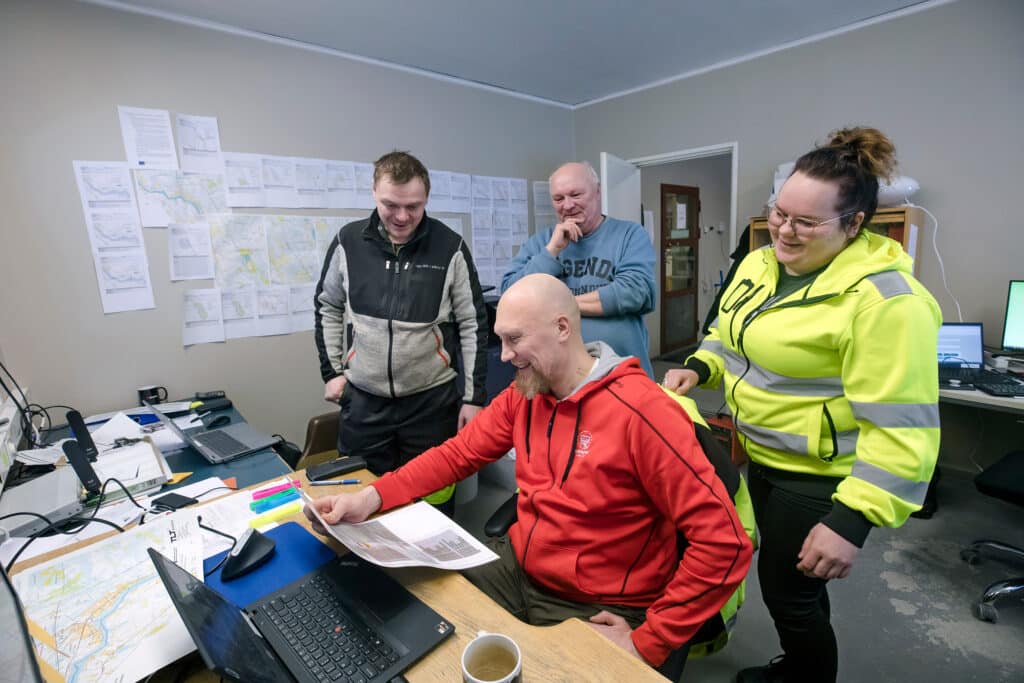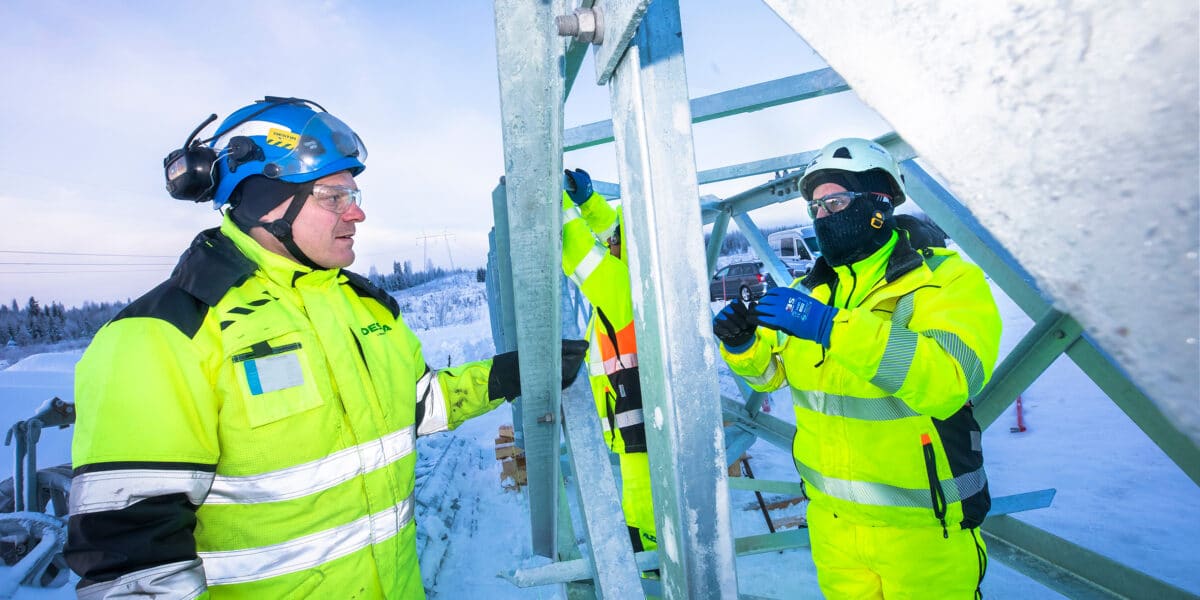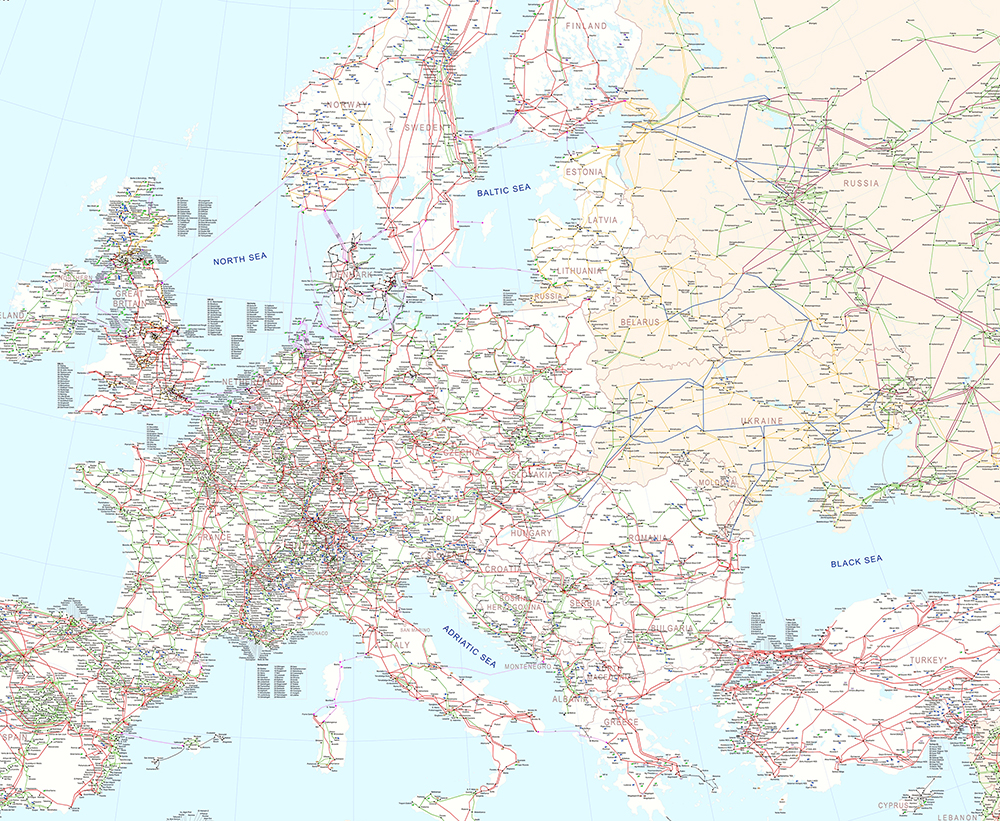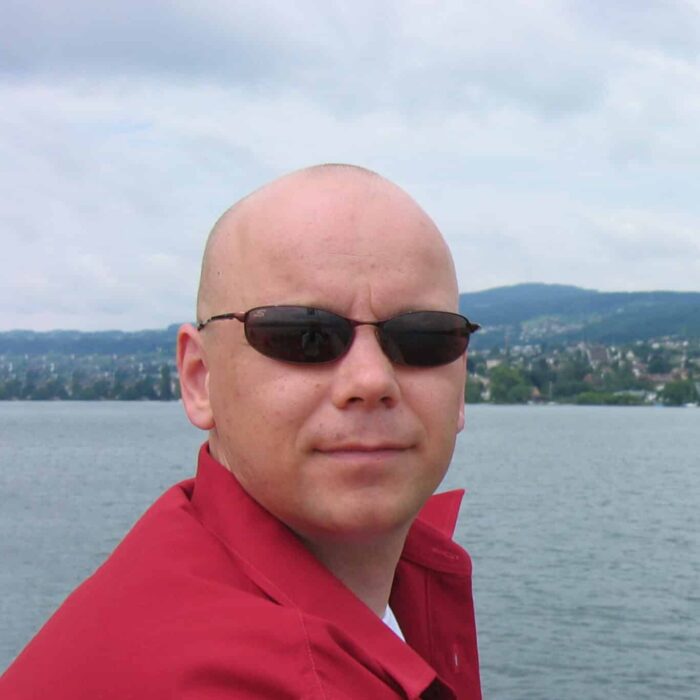Construction of the Aurora Line, a transmission line connection from Finland to Sweden, has progressed as far as Tornio.
In November 2023, construction began on a section of the line measuring nearly 50 kilometres in length from Vuennonkoski in Tornio to Viitajärvi in Keminmaa. The line will pass over marshlands, the Tornionjoki River, and many other safety challenges.
“A line of this length will encounter every type of terrain, and the risks and safety requirements are reviewed separately on every site,” emphasises Jarkko Honkarinta from Destia. He works as a safety supervisor on the Aurora Line construction project.
Planning a worksite as large as the Aurora Line is a long and detailed process which must be done before the first work phase can start. Destia’s occupational safety team visits the site and familiarises itself with the safety requirements imposed by the conditions.
The greatest risks on transmission line worksite include induced voltages, so the work group is especially careful to check parallel and intersecting transmission lines. There are many other things to look for too.
“Safe access routes and safe movement in the area are mapped with the land owner. The line will also pass over some protected environmental areas that must be taken into account when planning work and safety,” says Teemu Palosaari, Director at Destia.
Plans are reviewed as work progresses
In addition to detailed preliminary plans, various safety and risk observations are made as the work progresses because situations can evolve and the conditions change. A kick-off meeting is held before every new work phase, bringing together all the installation technicians, supervisors and subcontractors.
“The kick-off meeting covers the plans for the work phase, safety plans, work instructions, safety equipment, workwear and, for example, how to get around a worksite in marshland,” says Honkarinta.
He emphasises that even if a work phase feels familiar, no two places are identical, and the conditions may vary. The preliminary work plan is revised if necessary to facilitate safety and efficiency.
The hazards associated with the work and environment must always be identified before the work begins. The team must then assess whether the work can be done as planned.
“Nobody should charge headlong into a new task. The potential risks should be assessed every time to see whether anything has changed since the previous phase or day,” says Honkarinta.
On the Aurora Line site, Destia’s people ensure that safety plans are followed and the work is done as agreed. Third-party observers also visit the site occasionally.
“Even the slightest doubt should be taken into account. Everyone should be completely sure that the work will be safe.”
Safety is discussed during kick-off meetings and in smaller work groups as the work progresses. Ultimately, however, the responsibility for following safety instructions lies with each employee.
“If you are not 100% sure that the work phase can be done safely, you must not do it. Even the slightest doubt should be taken into account. You must be absolutely sure that you stay safe,” Palosaari emphasises.
Work planning reduces the urgency and stress
Every site has its own practices, but Fingrid’s internal occupational safety team meets four times a year to reflect on how to promote occupational safety on worksites.
Fingrid organises training and occupational safety briefings for contractors several times a year. Fingrid also invites the people responsible for worksite safety to attend meetings with contractors.
“Many of the accidents that have happened on Fingrid’s sites could have been prevented with relatively minor changes and better planning. That is why Fingrid’s theme for this year is ‘Planning for safe work’,” says Rami Isomäki, Project Manager in transmission line construction, is the latest member of the transmission system operator’s occupational safety team.

The occupational safety team has reviewed accidents on worksites. Over the years, many of them have been caused by slips and trips. Therefore, worksite safety plans should require spiked or studded shoes to prevent slipping, as on Destia’s worksite.
“Slippery conditions present a risk in the winter, especially when temperatures range from -30°C to around zero. Using the right footwear is one example of following the safety plan,” Honkarinta says.
Even more dangerous near-misses have occurred in Fingrid’s worksites due to induced voltage. These were caused by a lack of planning. In some cases, work was started or additional earthing was removed without permission. In others, the additional earthing was poorly planned in general.
“Planning work reduces the urgency and stress. This is important because when rushed, you may be tempted to take shortcuts in safety matters. Safety should always take precedence over timetables and money,” says Isomäki.
Destia has succeeded in making and adhering to safety plans:
“Everything has gone as planned on the Aurora Line worksite. We have had no accidents leading to absences on any of our transmission line worksites for two-and-a-half years,” Palosaari says.




